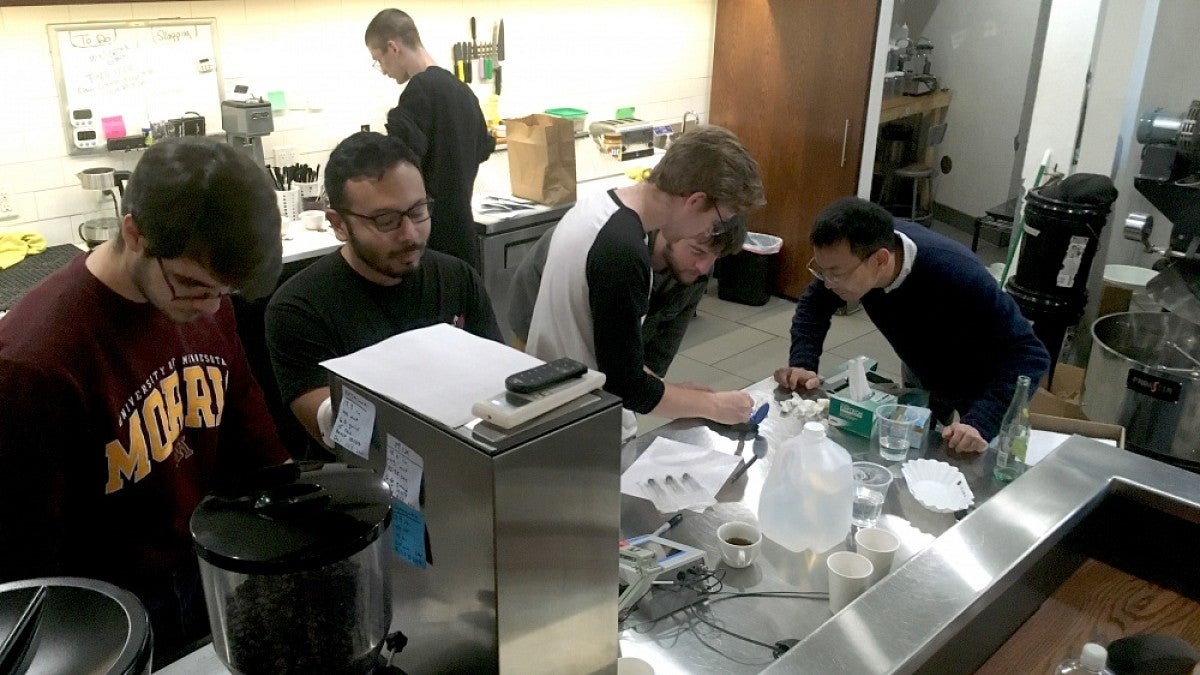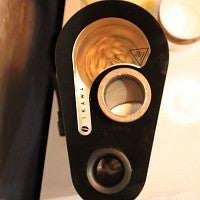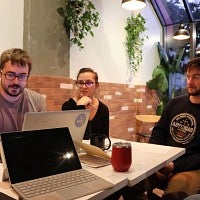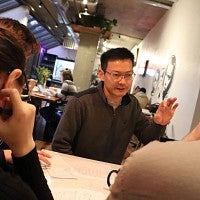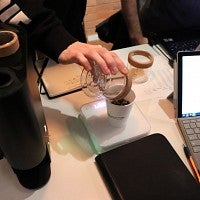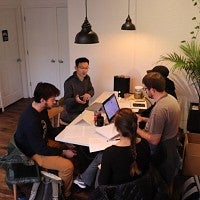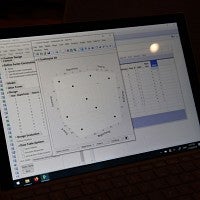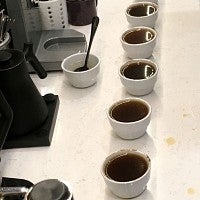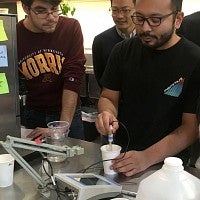During a casual weekend coffee run, the University of Oregon's Fuding Lin peered past the barista at the front counter of Tailored Coffee Roaster’s Fifth Street location, and an idea started brewing.
As the manager of the semiconductor and photovoltaics track in the UO’s Knight Campus Graduate Internship Program, Lin ensures that students get assignments relevant to their career goals while being engaged with the material.
“The quality of the coffee is in large part determined by the roasting process of the bean,” said Lin. “You can have the same bean but you can destroy it when you (overroast) it.”
Intrigued by the full-size bean roaster inside Eugene’s local microroastery, Lin began the process of creating a coffee-roasting experiment for the Design of Experiment course he has been teaching. The experiment centered around fine-tuning Tailored’s roasting process for light roast coffee by adjusting temperatures and time frames.
“The course is taught following the mantra of learning it by doing it,” Lin said. “The coffee-roasting was born out of my own curiosity and my effort to try to find a project for which the students would have strong enthusiasm.”
After observing Tailored’s roasting process first-hand and speaking with owner Brian Sung, Lin established a partnership allowing students enrolled in Lin’s Physics 581 course to conduct a coffee-roasting experiment, with the aid of the coffee shop’s two locations and in-house roaster Ryan Carr.
Lin split the project participants into two teams and the experiment into two stages: roasting, then brewing and tasting. Inside Tailored’s East 13th Avenue location, each team gathered and weighed 50 grams of the Colombia Tolima bean before each roasting trial.
Roasting involved applying heat using an Ikawa Pro sample roaster to complete a series of complex chemical reactions, including Maillard reactions, or chemical reactions between amino acids and reducing sugars. This chemical process transforms coffee beans from bitter to palatable when brewed.
Two weeks after each team roasted beans, both groups convened at Tailored’s on Fifth Street where Carr, the master roaster, ground the beans for brewing. Adhering to the Specialty Coffee Association’s standard protocol, Carr and a fellow coffee connoisseur served as the experiment’s expert tasters and evaluated each coffee roast's perceived acidity, sweetness and submitted an overall score. Meanwhile, students like Austin Ferrie collected objective data such as the pH value of each coffee sample.
“Coffee roasting brought a real hands-on aspect to what we’re learning in class,” Ferrie said. “There’s a big difference between working through problems in a book and going out and creating your experiment and working with your own data. It helps demonstrate that the material has uses outside of the classroom.”
The Design of Experiment course has been offered at the UO for a number of years, but it was the internship program’s engagement with industry that identified a career-enhancing skill – proficiency in JMP, pronounced “jump,” an industry-standard software for statistical analysis. Students and alumni who have training in the software are more attractive candidates in the technical job market and more productive when hired.
By 2016, Lin had taken over as instructor of a modified version of the course, which began incorporating extensive training on how to use the JMP software as well as more hands-on projects.
With Lin’s tutelage, coupled with the depth of instruction within the course, Ava Pasnon, who graduated in 2019 with a master’s in chemistry, made a seamless transition into a career at Wolfspeed, a Cree, Inc. company that specializes in making compound semiconductor devices in North Carolina’s Research Triangle Park.
“Whenever he was teaching us anything, whether it be in the (experiment) class or applied physics, he was really good about trying to relate it back to the real world and how you would use this in your own project management in the workforce,” Pasnon said.
Pasnon used her experience and understanding of the JMP software to streamline the number of chemical recipes — unique sets of process variables — available for the profilometer, one of the tools she uses at Cree.
“While it’s possible to learn JMP on your own, the software has a large learning curve and learning to use it in a classroom setting where you have multiple resources, such as your peers and Fuding Lin, is a great opportunity,” Ferrie said. “Having software experience like JMP will set your resume apart from others’ and, consequently, make you more competitive in the job market.”
As for the desired outcome from the coffee roasting experiment, besides finding strong correlations between expert tasters’ perceived coffee attributes and the objective data students collected from the roasts, one undeniable truth revealed itself as a result of the study.
“I personally like coffee, and when I compare the coffee that Tailored roasted and the coffee I bought from less selective stores, the difference is very apparent," Lin said. "Now, I find myself not going to the most convenient places for coffee anymore. Once you’ve had the better cup, you can’t go back.”
—By Christopher Jones, University Communications


